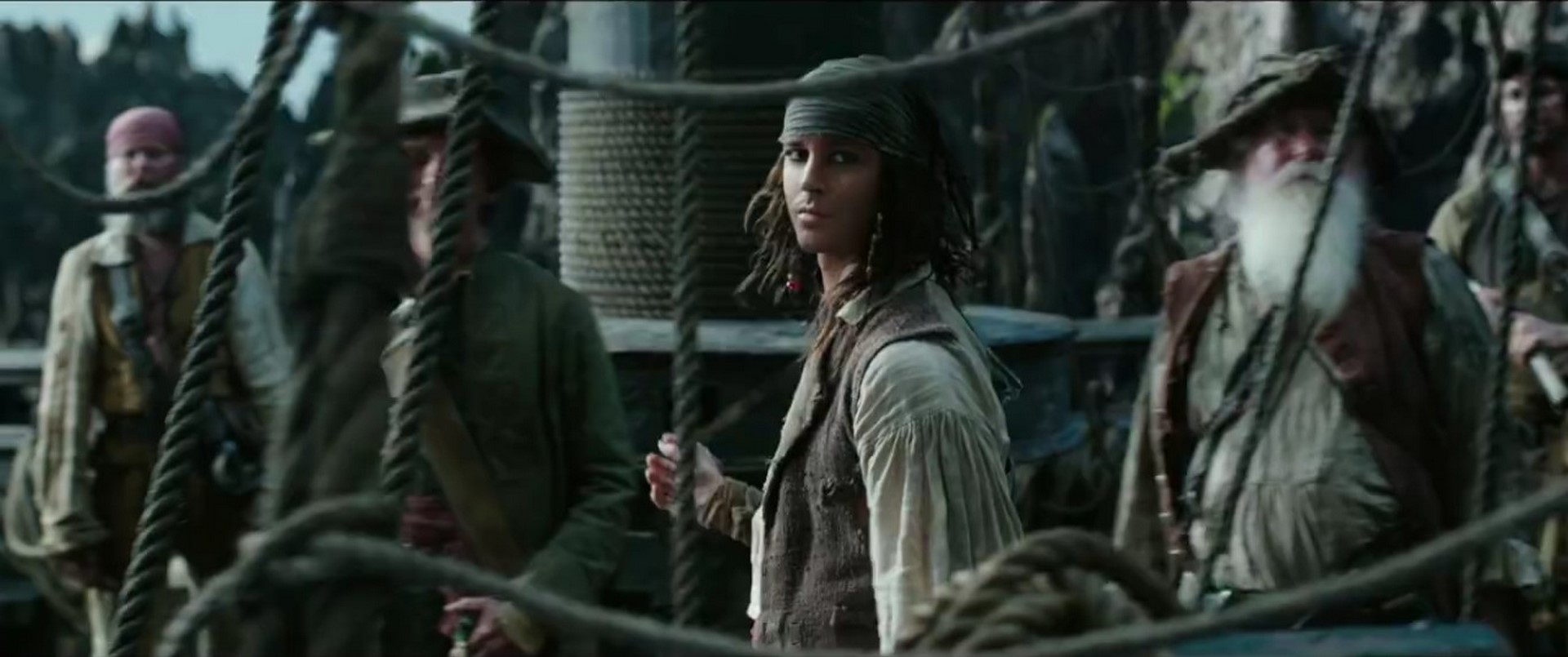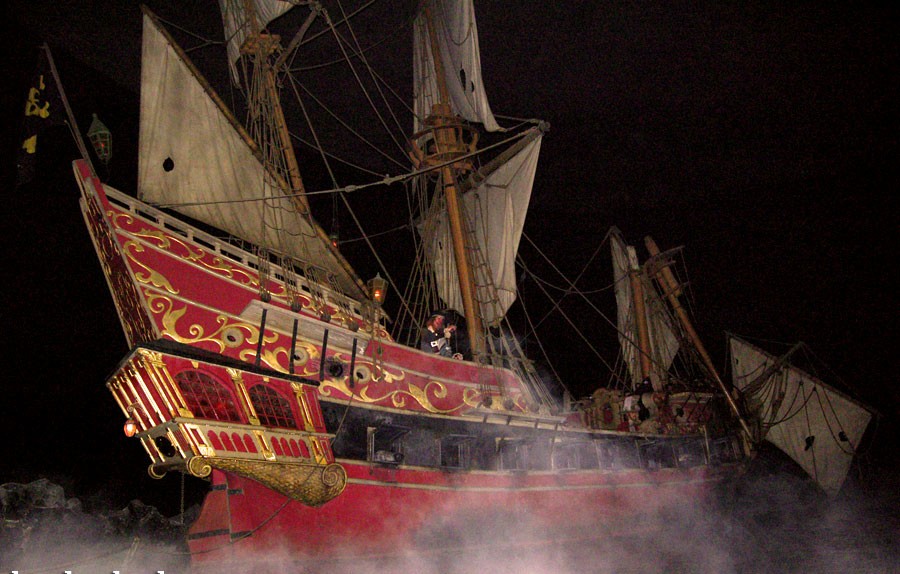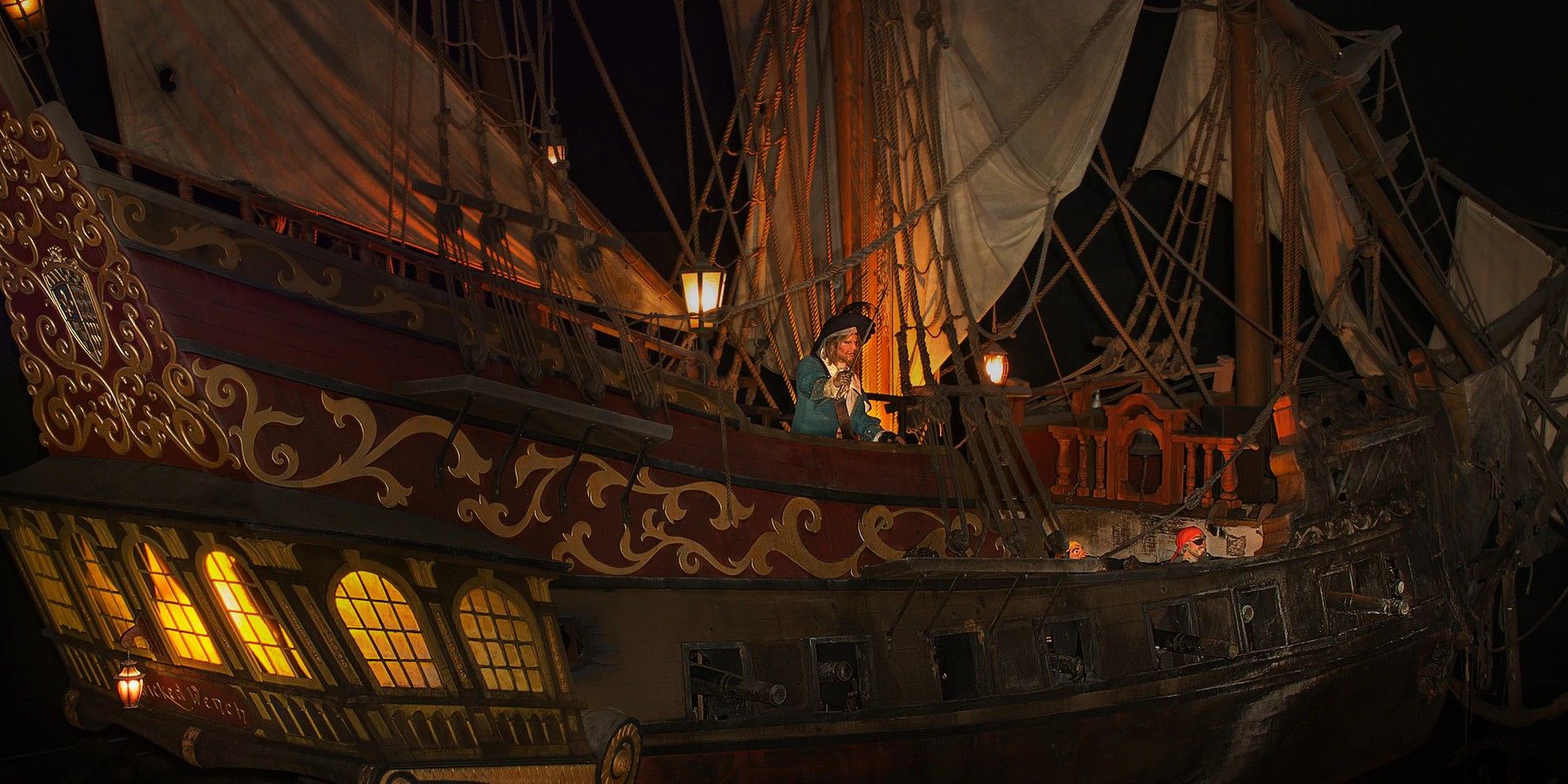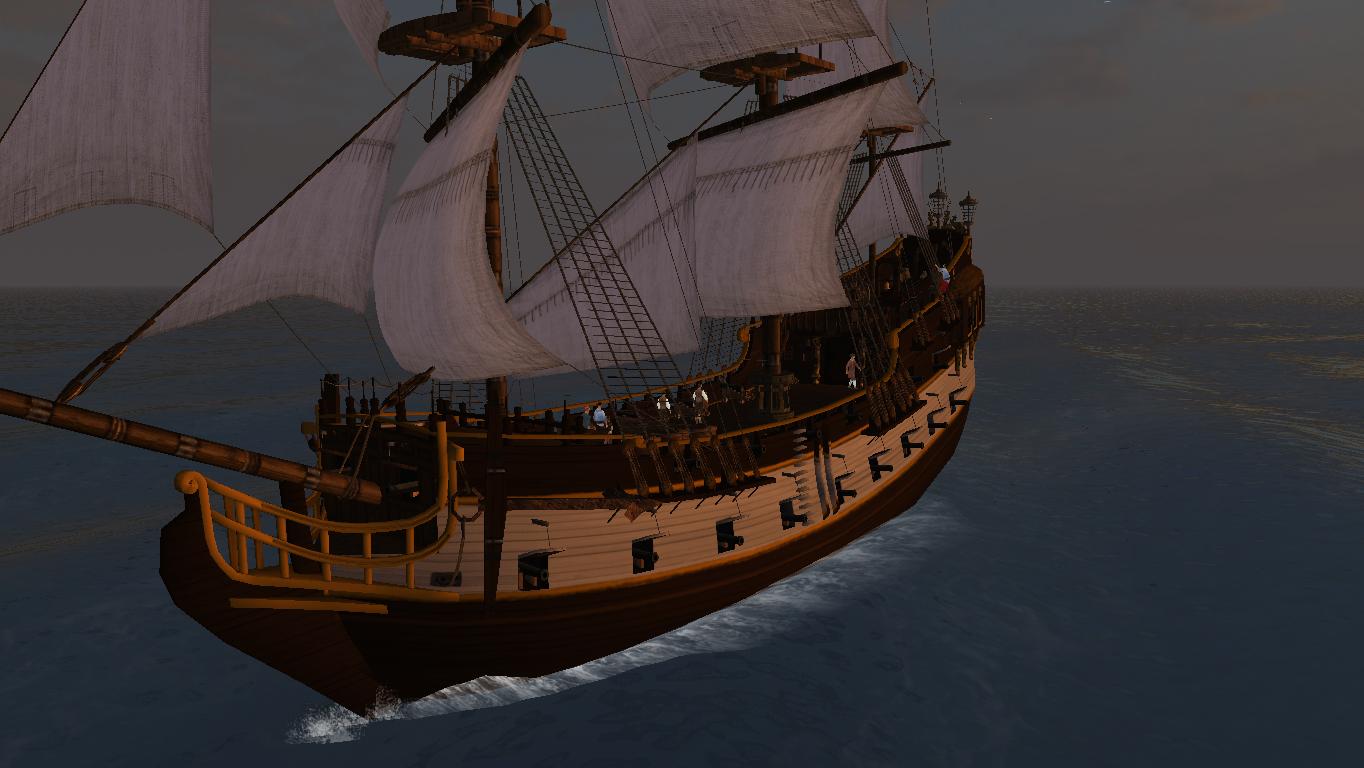
Her speed is derived from the large amount of sails she carries. Indeed, in the three films she either overtakes or flees all other ships, including the Interceptor (regarded as the fastest ship in the Caribbean) and the Flying Dutchman (which is actually faster against the wind). It was later raised from the sea floor by Davy Jones after making a pact with Jack Sparrow who rechristened her the Black Pearl. The ship was originally named Wicked Wench before she was ordered burned and sunk by Lord Beckett. Not only do the black sails act as a sort of intimidation tactic, but the Pearls crew can put out the deck lamps for added stealth at night. This turns out to be an advantage in more than one way. In the screenplay, the Black Pearl is easily recognised by her distinctive black hull and sails.


Metal anchors and a wooden rudder are visible on the front and rear of the ship. High above the foremast is a distinctive pirate flag with symbols of a skull and 2 blades crossing each other. The front bowsprit and three large masts are connected securely using advanced rigging and lines painstakingly knotted and fastened by hand. It features plank on frame, 3 decks and one row of ferocious metal cannons on each side of the ship. This infamous Black Pearl model is fully coated in dark black paint.

They are 100% hand built individually using plank-on-frame construction method and are similar to the building of actual ships.

They are built to scale with high-grade wood such as western red cedar, rosewood and mahogany. Master craftsmen using historical photographs, drawings or original plans meticulously handcraft these highly detailed wood models from scratch.


 0 kommentar(er)
0 kommentar(er)
